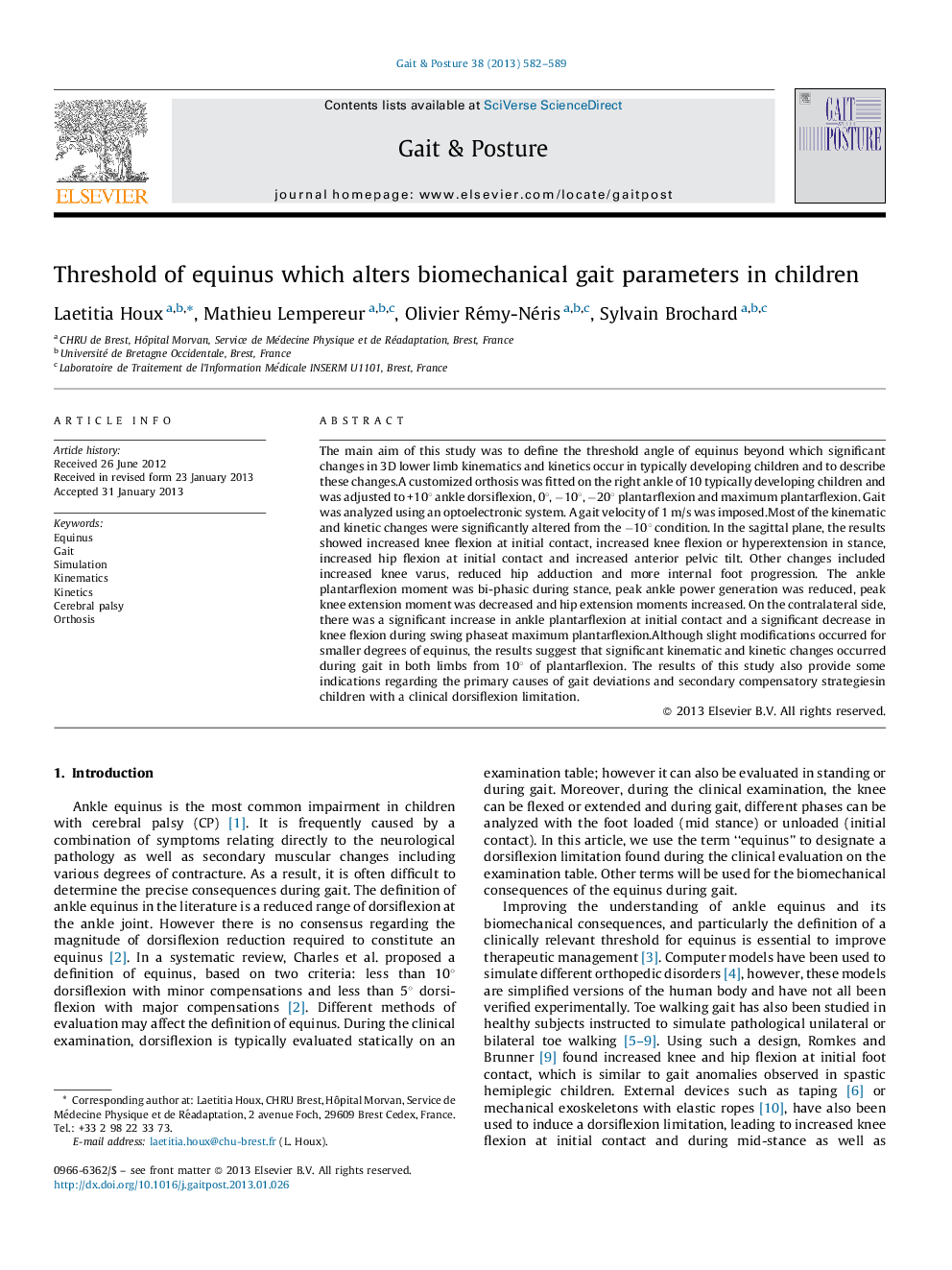| کد مقاله | کد نشریه | سال انتشار | مقاله انگلیسی | نسخه تمام متن |
|---|---|---|---|---|
| 6206685 | 1265652 | 2013 | 8 صفحه PDF | دانلود رایگان |

The main aim of this study was to define the threshold angle of equinus beyond which significant changes in 3D lower limb kinematics and kinetics occur in typically developing children and to describe these changes.A customized orthosis was fitted on the right ankle of 10 typically developing children and was adjusted to +10° ankle dorsiflexion, 0°, â10°, â20° plantarflexion and maximum plantarflexion. Gait was analyzed using an optoelectronic system. A gait velocity of 1 m/s was imposed.Most of the kinematic and kinetic changes were significantly altered from the â10° condition. In the sagittal plane, the results showed increased knee flexion at initial contact, increased knee flexion or hyperextension in stance, increased hip flexion at initial contact and increased anterior pelvic tilt. Other changes included increased knee varus, reduced hip adduction and more internal foot progression. The ankle plantarflexion moment was bi-phasic during stance, peak ankle power generation was reduced, peak knee extension moment was decreased and hip extension moments increased. On the contralateral side, there was a significant increase in ankle plantarflexion at initial contact and a significant decrease in knee flexion during swing phaseat maximum plantarflexion.Although slight modifications occurred for smaller degrees of equinus, the results suggest that significant kinematic and kinetic changes occurred during gait in both limbs from 10° of plantarflexion. The results of this study also provide some indications regarding the primary causes of gait deviations and secondary compensatory strategiesin children with a clinical dorsiflexion limitation.
⺠Kinematic and kinetic changes occurred during gait from 10° of plantarflexion. ⺠Knee flexion and hyperextension can appear due to an induced equinus in children gait. ⺠Description of 3D joint kinematics and kinetics of induced equinus may help clinician.
Journal: Gait & Posture - Volume 38, Issue 4, September 2013, Pages 582-589